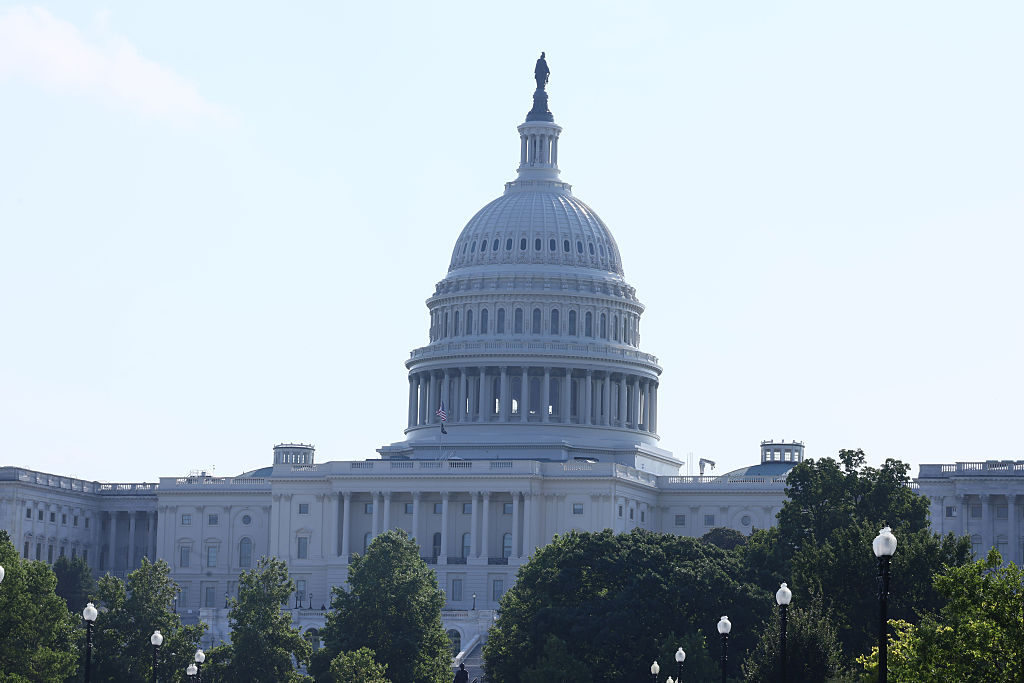
America’s immigration debate has long been dominated by absolutists, advocating either completely open or entirely closed borders. The Dignity Act—a bipartisan bill co-sponsored by Reps. Maria Elvira Salazar (R-FL) and Veronica Escobar (D-TX)—presents itself as a middle path, combining new enforcement measures with a proposal to grant noncitizen legal status to qualified illegal immigrants, while pointedly withholding a path to citizenship. Whether the 493-page bill represents a workable compromise or yet another doomed reform depends, in part, on how one evaluates its provisions and costs.
First, the Dignity Act aims to beef up enforcement. It would enhance border security by allocating money for drones and radar technology and crack down on illegal hiring by requiring employers to use E-Verify.
Finally, a reason to check your email.
Sign up for our free newsletter today.
The bill would toughen maximum penalties for illegal immigrants who re-enter the country after deportation. First-time offenders would face up to ten years in prison, while repeat crossers with serious felony records could receive sentences of up to 30 years. Currently, illegal re-entry is punishable by up to two years in prison. Aggravating factors—such as prior removals, violent criminal histories, or unfinished sentences—would move offenders into harsher penalty brackets.
Employers who violate hiring laws would face a similar sliding scale of penalties, with escalating civil fines for repeated infractions. For chronic violators, the bill authorizes debarment, effectively blacklisting businesses from receiving federal contracts.
In exchange for these heightened security measures, the bill would create a novel legal status for many of the nearly 10.5 million unauthorized immigrants who have been in the U.S. since December 31, 2020, most of whom have lived in the country for more than ten years. Under the Dignity Program, illegal aliens who follow the application process and pass a criminal background check would be allowed to stay in the country as noncitizens on a renewable seven-year permit.
To remain in the country under the bill, participants must obtain health coverage and demonstrate steady employment or school enrollment for at least four of the seven years (with exceptions for caregivers and seniors). They must also attend a biennial check-in with the Department of Homeland Security to verify compliance and maintain “good standing” in their communities.
Because participants entered the country illegally and would be ineligible for federal benefits and therefore exempt from the Social Security tax, the bill requires them over seven years to pay a fixed $7,000 fine plus a 1.5 percent payroll levy. Dignity Program participants earning even a modest $30,000 annually would contribute more than $10,000 over seven years; higher-earning participants would pay almost double that. One official estimate projected the fine and levies would raise about $70 billion for the bill’s Immigration Debt Reduction Fund, which would fund the bill’s programs.
The Dignity Act also raises several immigration caps and quotas. First, it boosts family-based immigration by exempting the spouses and minor children of lawful permanent residents from yearly visa limits, freeing up those 89,700 slots for immigrants in other family categories. It would also raise the cap for unmarried adult children of U.S. citizens from 23,400 to about 111,300 visas per year.
Second, it would double the per-country limit for green cards, increasing every country’s annual cap from 7 percent to 15 percent of total family- or employment-based visas.
Third, it would expand the number of employment-based green card recipients by no longer counting spouses and children of principal applicants against the annual quota. This doesn’t change the official 140,000 visa cap but would allow roughly 50 percent more skilled workers to immigrate under the green-card program.
Finally, the bill would expand temporary worker programs by exempting returning H-2B workers (who held an H-2B visa in the past three years) from the annual visa ceiling.
Collectively, these changes would significantly raise legal immigration levels and cut visa backlogs. By exempting key family members and returning workers from quotas while raising numeric limits, the Dignity Act would free tens of thousands of additional visas each year—speeding family reunifications, distributing visas more equitably among countries, and supplying a larger skilled and seasonal workforce to the U.S.
The Dignity Act has garnered bipartisan support, with more than ten Republican and ten Democratic co-sponsors. That’s unsurprising, on one view, because the bill reflects polling showing that most Americans believe that immigration benefits the country. And they support letting illegal immigrants obtain legal status if they meet requirements.
But opponents might counter that the bill is unfair, as it allows some illegal immigrants to “skip the line” and displace those outside the country seeking to enter through proper channels. Further, they might claim that legalizing this batch of unauthorized immigrants could inspire another migration surge that could demand an equally sweeping pardon a generation from now. Senator Josh Hawley, for example, warned that “amnesty is always a bad idea.” Progressive hard-liners might dismiss the bill, too, as a half-measure that fails to ensure illegal immigrants are recognized as citizens.
Two unresolved questions from the bill linger: If this isn’t amnesty, are we merely entrenching a permanent subclass of non-citizens? And how, exactly, does “dignity status” differ from a glorified work permit?
Regardless of the merits, the bill is unlikely to win Donald Trump’s signature—or the backing of a Trump-aligned GOP. Many conservatives have characterized efforts to grant illegal immigrants even limited legal status as “amnesty.” Trump himself has signaled interest in narrow fixes (like a temporary work pass for farm labor) but not broad relief.
Operationally, implementing the Dignity Act amid ongoing ICE raids and removals would be difficult. The very immigrants the bill would legalize could be swept up in enforcement sweeps. The drafters tried to provide for this by deferring removal of qualifying applicants, which would implicitly require ICE to stand down in those cases.
The Dignity Act tries to satisfy everyone, which means that it leaves everyone at least somewhat unsatisfied. Some illegal immigrants gain legal security and work rights but no path to citizenship. Enforcement advocates get tougher penalties but must accept that millions of unauthorized immigrants will remain. In the months ahead, we’ll see whether the bill’s backers can hold the political middle—or whether, as seems likely, the Dignity Act collapses under the weight of its contradictions.
Photo by Jemal Countess/Getty Images for Caring Across Generations
Source link


















